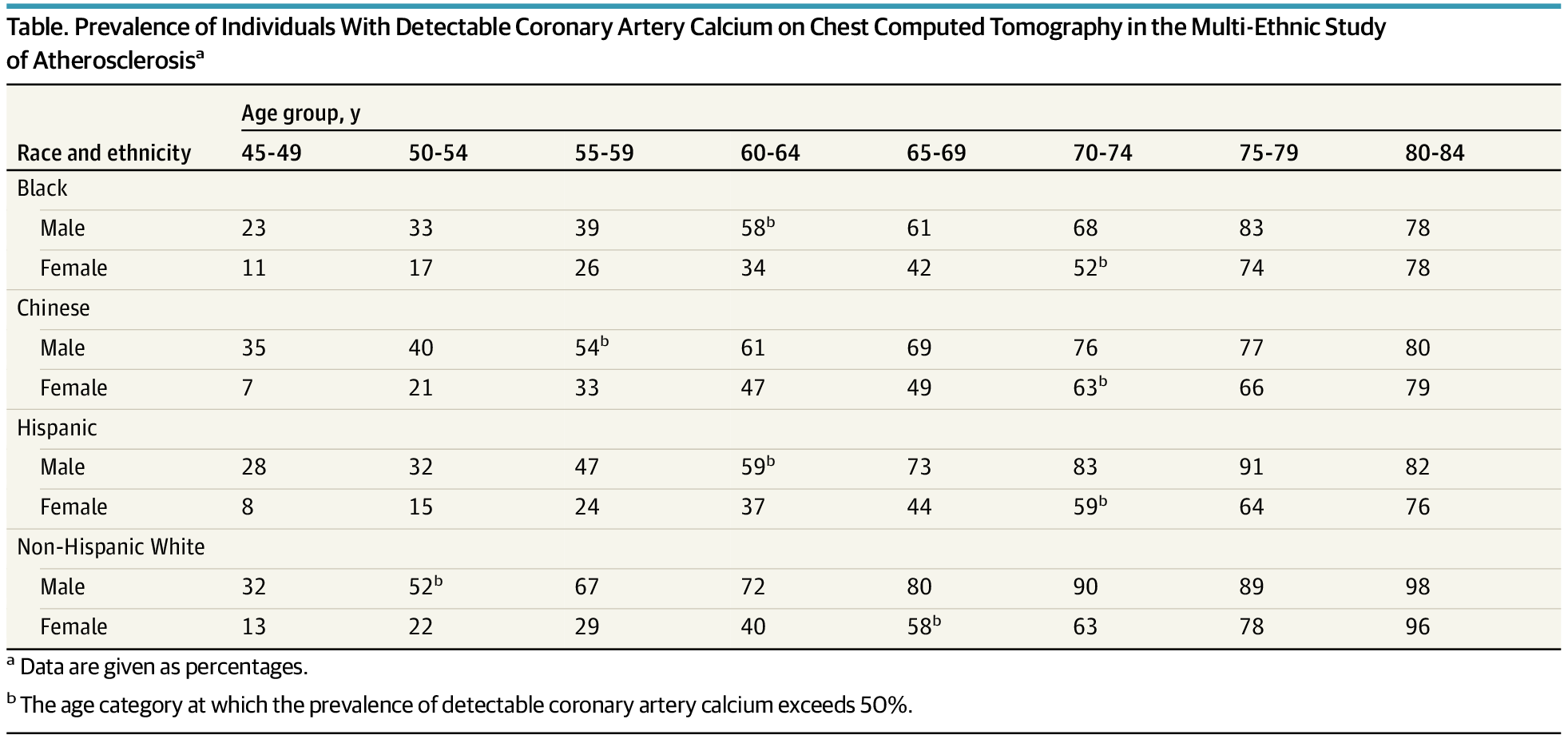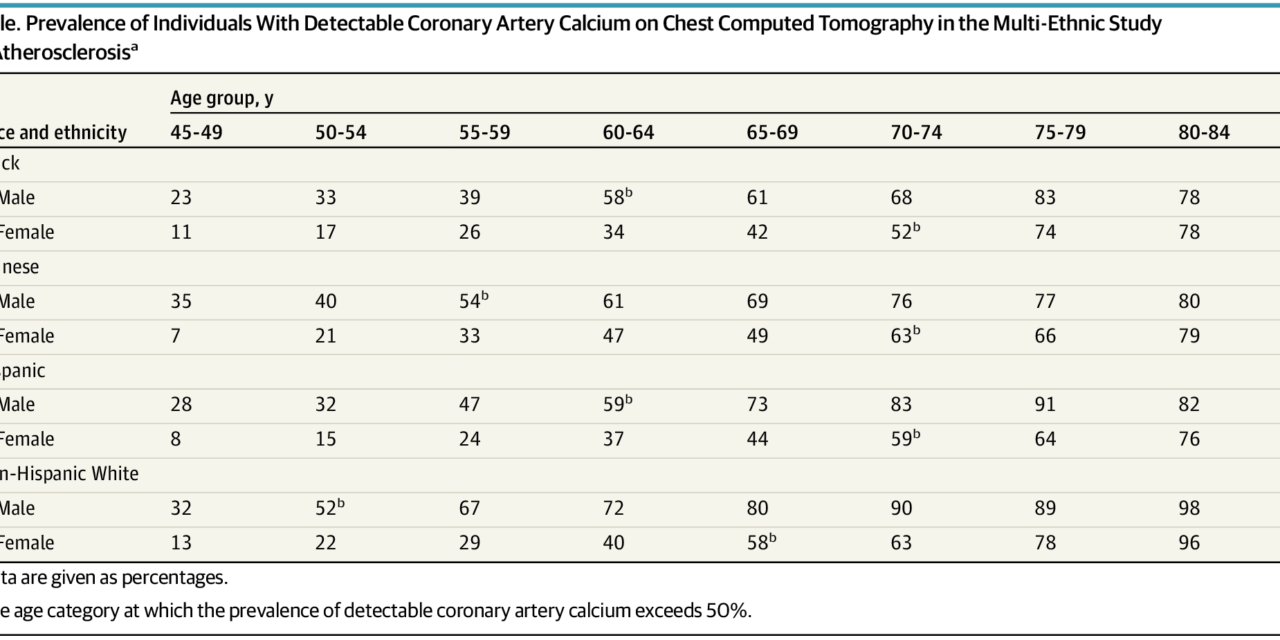
A recent study that used a deep-learning algorithm to identify coronary artery calcium (CAC) on nongated chest computed tomography (CT) scans showed that notifying the patient’s health care team of the presence of CAC increased statin prescriptions, cardiology clinic visits, and stress tests.1 Understanding the expected prevalence of CAC in people without clinical atherosclerotic cardiovascular disease (ASCVD) can help guide decision-making when detected and avoid unnecessary ischemic testing that might be performed to allay physician or patient anxiety. This is especially important because CAC prevalence is impacted substantially by age and differs by sex and race and ethnicity. We report clinically relevant data to help frame the patient-physician discussion, based on CAC detection rates in the Multi-Ethnic Study of Atherosclerosis.2




